Unlock the Editor’s Digest for free
Roula Khalaf, Editor of the FT, selects her favourite stories in this weekly newsletter.
This article is part of FT Globetrotter’s guide to Copenhagen
I was born in the countryside of Jutland, far away from the bright lights and culinary adventures of Copenhagen. I grew up on my parents’ farm, bordering the forest, so I have never, like many chefs who grow up in cities, felt that foraging for ingredients in the countryside was something new and exotic. For me, that was just day-to-day life. Instead, as I was (and still am) a tech nerd, I cherished the times that we went on school trips to Copenhagen. Since I didn’t know anything about gastronomy back then, the most mind-blowing experience for me was visiting the Copenhagen Planetarium — and being transported to a whole new 360-degree reality. Later, that experience inspired me to design the main dining room in my restaurant as a planetarium dome.
I’ve lived in Copenhagen since 2015, and seeing as most of time since I moved here has been spent working, I still have a lot to discover. Consequently, my neighbourhood isn’t where I live, but where my restaurant is: the former industrial half-island of Refshaleøen, on the outskirts of central Copenhagen. The area, a vibrant mix of ugly and charming old buildings, with small businesses set up in shipping containers, is developing quickly, with gastronomy being one of the main drivers behind its popularity.
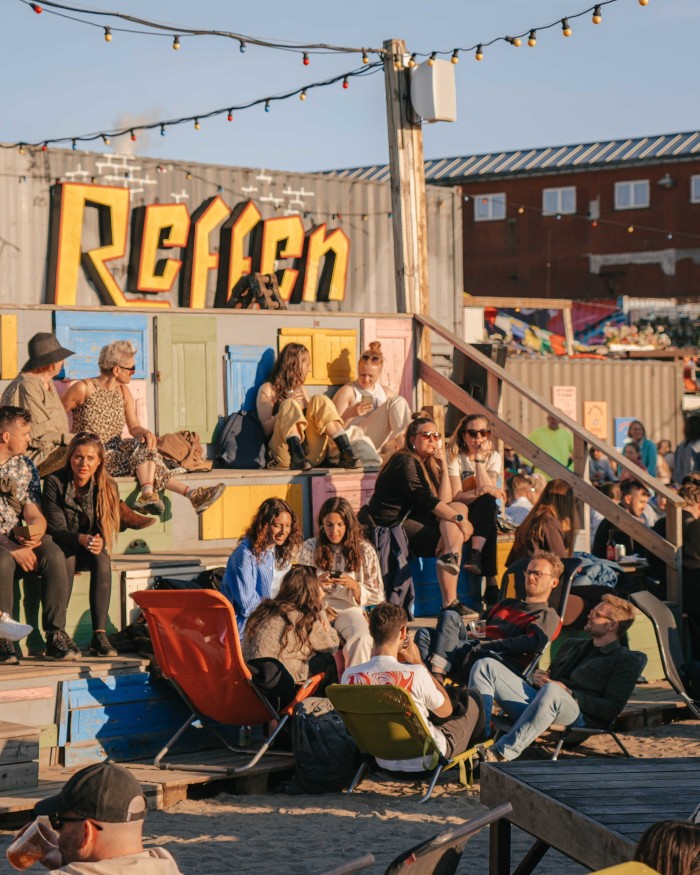
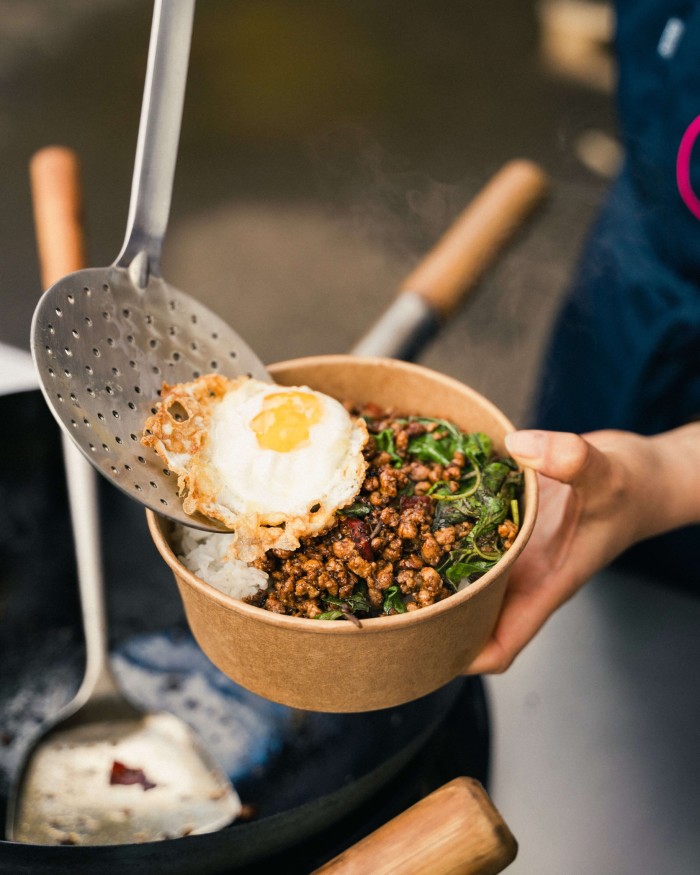
One of my favourite places is the Reffen Street Food market, where visitors can enjoy food from around the world. (My go-to for takeaway there is Holy Krapow for its signature dish: pad krapow, a Thai pork stir-fry dish, and it is amazing.) Another spot not to miss is La Banchina, a chameleon of a restaurant on the waterfront serving wonderful set menus in winter, and lighter meals in summer when crowds flock on the jetty just below in bathing suits, drinking wine between dips in the sea and visits to the on-site sauna. The best bakery out here is Lille, which apart from delicious bread and baked goods serves excellent lunches. There’s even a farm project with two yurts, set up as restaurants, called Øens Have.
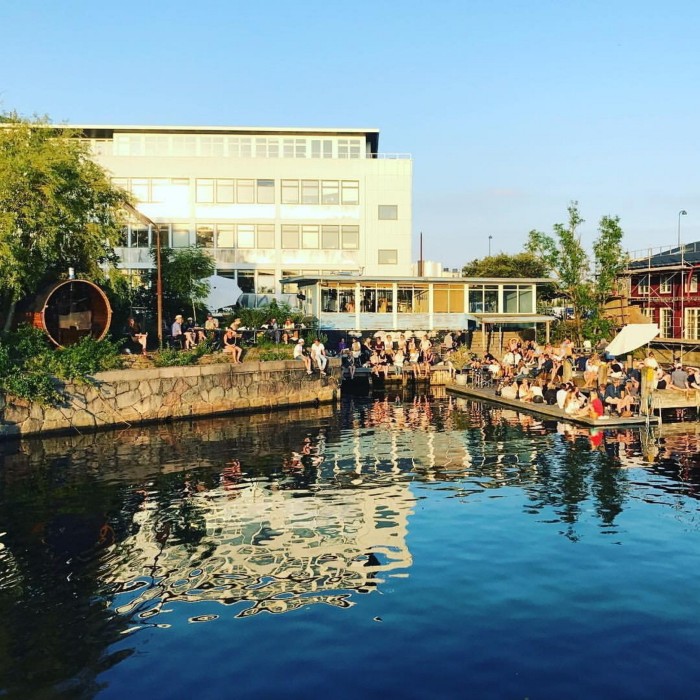
For a chef, there is always the challenge of staying creative. I sometimes wish that, like a musician, I could create an album, go on tour with it for a year, and then shut down for a few months to focus on the next one. Having a restaurant that is open year round, I need to invent new things in parallel with “performing” every night. I used to go to restaurants for inspiration, but nowadays I find that art is what can really open my eyes and push me in new directions. We are so lucky to have a vibrant art scene in Copenhagen. The installation-art centre Copenhagen Contemporary is our closest neighbour on Refshaleøen, and I go there as often as I can. Until August, there is a thought-provoking exhibition on by Canadian artist Kapwani Kiwanga, whose work explores society and power dynamics, which I recommend visiting.
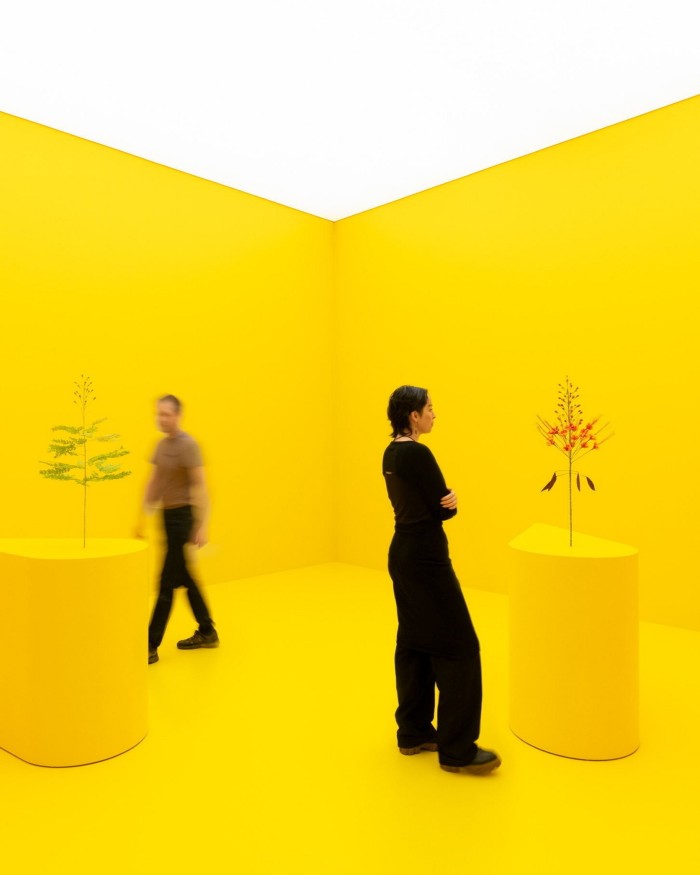
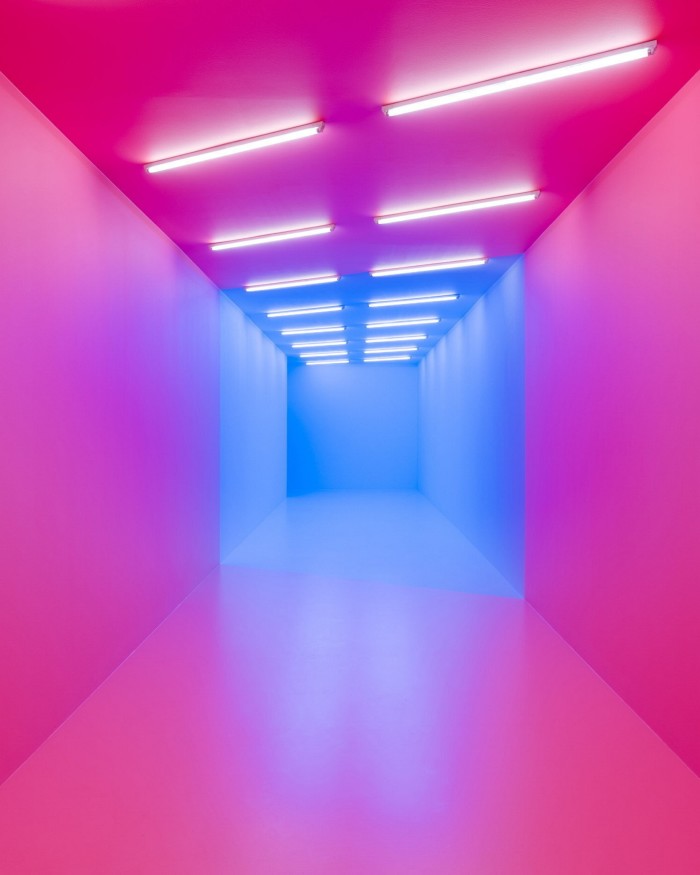
In another part of Copenhagen, one of my favourite art experiences is Cisternerne (The Cisterns), an underground art space in the city’s former reservoir system. The venue is magical and mystical and lends itself to the most spooky and immersive experiences possible. Another favourite is Louisiana, the modern art museum just north of Copenhagen. I visit almost as much for the beautiful setting and the views as I do for the art exhibitions. One of the city’s most majestical establishments, however, is certainly Glyptoteket — you could spend days here, exploring everything from ancient Egypt to French masters such as Cézanne and Renoir, and at the same time enjoying the spectacular architecture and the indoor garden oasis in the middle of it all. As for art galleries, I always discover new and exciting artists at Galleri Bo Bjerggaard.
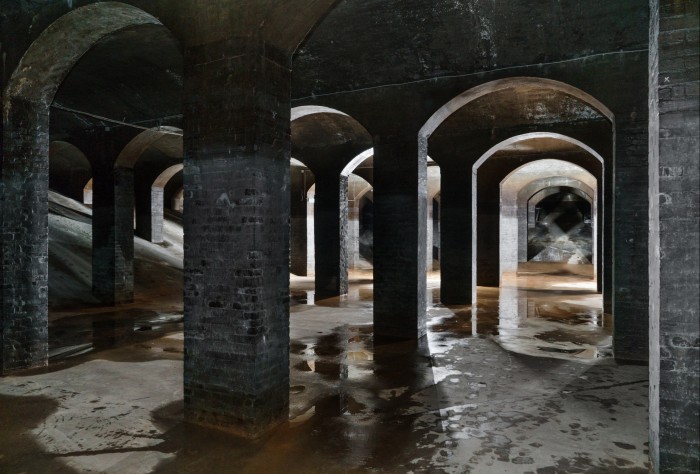
When it comes to culinary art, people often assume that I must only go to out-of-the-box, experimental restaurants, since [my restaurant] Alchemist breaks with conventions, but in reality, I am often propelled towards quite classical places. I guess it’s all about contrasts. A couple of my go-tos are the French-leaning and quite rustic Maison (I recommend the steak au poivre) and the Bistro Boheme for slightly more decadent treats (I always go for the oysters). Silberbauers Bistro is also a favourite for simple but tasty southern French-style seafood, such as grilled sardines and mussels with garlic mayo. For Italian, I like Barabba, which is open late and is therefore very popular with hospitality workers, and Boutique Emilia for the outstanding pasta and the charming hospitality by Stefano and Noemi, who run the tiny place single-handedly.
As for Danish classics, anyone going to Copenhagen should treat themselves to at least one traditional smørrebrød lunch. The open sandwiches are our country’s main claim to fame, but they can vary in quality, especially in the touristy haunts. I suggest trying them at Restaurant Møntergade (don’t miss the one with deep-fried poached egg and lobster when it’s available), and Selma for its more modern takes.
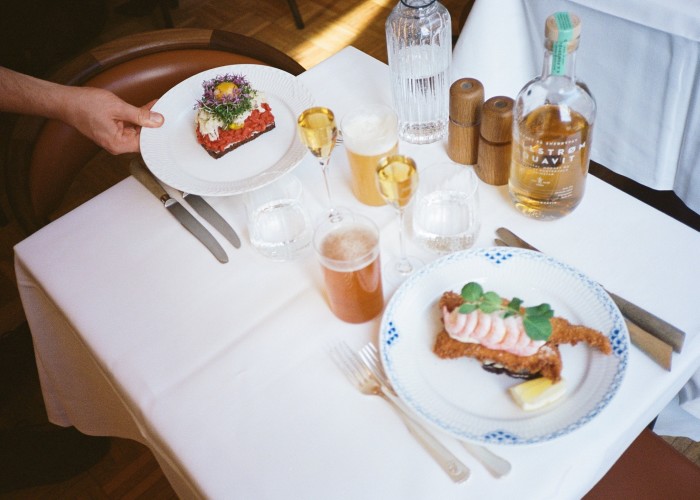
Coffee and baked goods are an integral part of Danish life — it’s no coincidence that a buttery, flaky pastry is named after our nationality — and my absolute favourite places are Juno Bakery (I am obsessed with their cardamom buns) and my former next-door bakery Alice, which in my opinion makes the best croissants in town. If visiting in summer, don’t miss out on their homemade ice cream.
It’s no secret that chefs consume a fair amount of fast food: it is a paradox when you spend your time paying attention to every tiny detail in the kitchen, but often need to find something to eat fast — and often in the middle of the night after service. Even if I am trying to limit my intake nowadays, I do fall off the wagon from time to time. Poulette and Gasoline Grill serve the best fried chicken sandwiches and burgers in town, and if I am craving pizza there is no place better than Surt in Carlsberg Byen — a new part of town in the old brewery “village” that is worth checking out. Slurp Ramen makes the best noodles in the city, and for Mexican food the Hija de Sanchez taqueria in Kødbyen (the Meatpacking District) is the place to go.
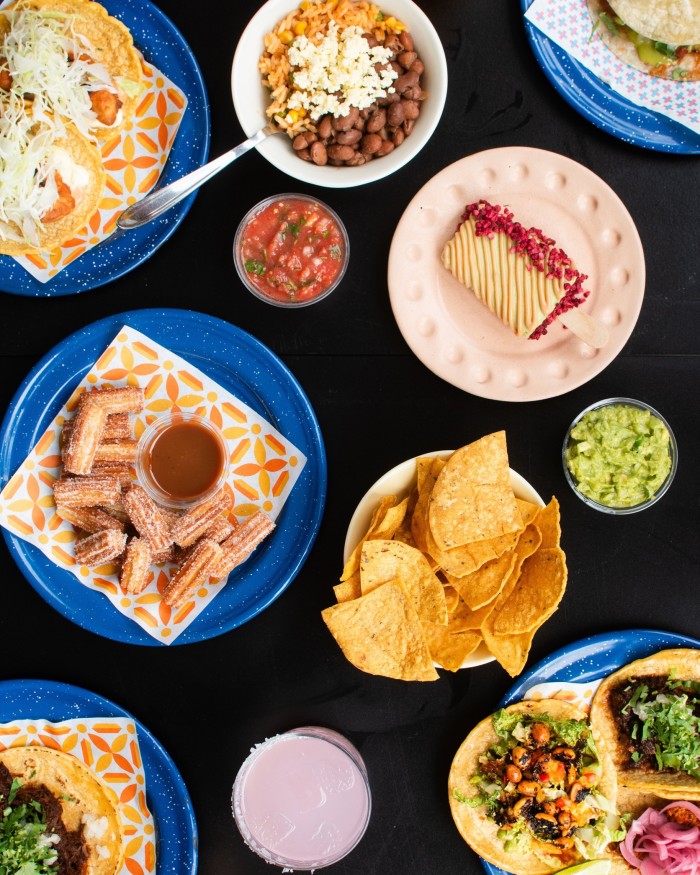
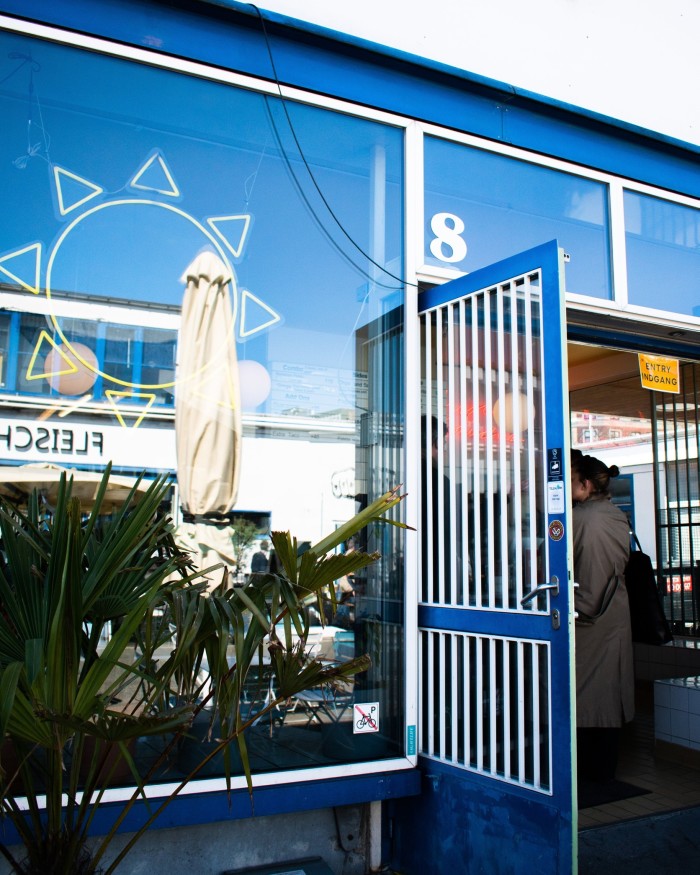
I don’t very often go out for cocktails, but when I do I search out cosy and welcoming places. Two places I love are Ruby and the hidden gem The Library Bar in the Copenhagen Plaza hotel, where you can experience an early-20th-century atmosphere among rare first-edition books and comfortable classic English furniture — and there is often live jazz late in the evenings.
Rasmus Munk is the chef and co-owner of the two-Michelin-starred Alchemist in Copenhagen, an immersive dining experience that has been named one of the World’s 50 Best Restaurants
Share your culinary and artistic Copenhagen highlights in the comments below. And follow FT Globetrotter on Instagram at @FTGlobetrotter
Cities with the FT

FT Globetrotter, our insider guides to some of the world’s greatest cities, offers expert advice on eating and drinking, exercise, art and culture — and much more
Find us in Copenhagen, London, Hong Kong, Tokyo, New York, Paris, Rome, Frankfurt, Singapore, Miami, Toronto, Madrid, Melbourne, Zurich, Milan and Vancouver
